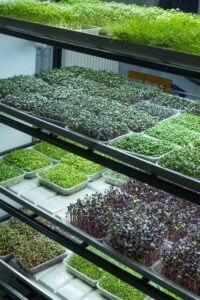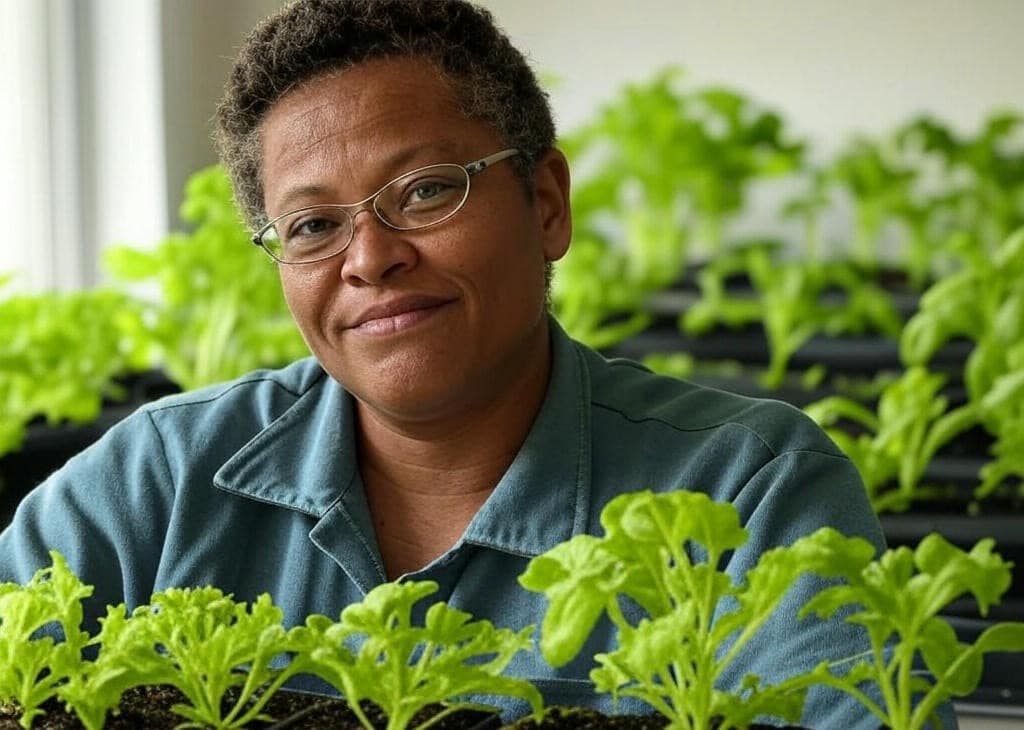Where it All Begins: Hydroponic Seeds Explained
Table Of Content
Hydroponic gardening may seem all about systems, lights, and nutrients, but none of these tools can guarantee success without one simple thing: quality hydroponic seeds. The very heart of every hydroponic project beats in its seeds. When you’re growing plants without soil, you rely on the power locked inside that tiny seed more than ever before.
A common mistake beginners make, and yes, I made it too, is assuming any seed will do the job in hydroponics. I once used random old seeds from my kitchen drawer. The result was disappointing. Poor germination, weak sprouts, and many wasted days of effort. It didn’t take long for me to understand that hydroponic seeds aren’t “special,” but they absolutely need to be selected with more care.

What Are Hydroponic Seeds Exactly?
Let’s be clear — hydroponic seeds are regular seeds. But what sets them apart is how they’re chosen and handled in a soilless environment. In hydroponics, there’s no rich, protective soil structure to support weak seeds. There’s only water, air, light, and the environment you create.
Hydroponic seeds need to germinate easily in growing media like rockwool or coco coir. They need to develop healthy roots without soil stability. And they should ideally resist common problems like damping-off or mold, which can happen more easily in moist, closed environments.
The best seeds for hydroponics are often the same varieties used for indoor gardening—compact, fast-growing, and reliable.
The Importance of Seed Freshness in Hydroponics
One of the first lessons I learned was that old seeds rarely perform well in hydroponic systems. In soil, you might get lucky with older seeds. In hydroponics, every weak trait becomes obvious fast. Freshness matters more than people think.
That’s why I always recommend sourcing seeds from trusted suppliers who indicate their packaging or harvest date. Look for germination rates of 90% or higher. These numbers tell you how much energy is left inside the seed for a successful start.
Best Types of Plants to Grow from Hydroponic Seeds
Not all plants love hydroponics equally. But many popular greens and herbs absolutely thrive in these conditions when started from good-quality seeds.
Leafy greens like lettuce, spinach, and arugula are some of the easiest and most forgiving options. Herbs like basil, mint, parsley, and cilantro perform beautifully. For those looking to grow fruit plants, strawberries, cucumbers, and certain tomato varieties can deliver fantastic results if you have the space.
Can You Use Regular Garden Seeds?
Yes, you absolutely can. Regular garden seeds work perfectly fine in hydroponic systems as long as they are:
- Fresh and viable.
- Suitable for controlled environments.
- Free from chemical coatings (some garden seeds are treated for pests).
Just remember: not all crops are ideal for hydroponics. Focus on varieties like leafy greens, herbs, tomatoes, and peppers for best results.
How to Germinate Hydroponic Seeds Correctly
Germinating seeds in hydroponics is both an art and a science. The process is simple but unforgiving if you cut corners.
I always start my seeds in rockwool cubes or coco plugs soaked in pH-balanced water (ideally between 5.5 and 6.0). Keeping the environment warm — around 70 to 75°F — and maintaining high humidity helps ensure consistent sprouting.
But remember, too much moisture is just as bad as too little. Overwatering kills more hydroponic seedlings than anything else. Seeds need moisture, air, and warmth — not soaking in wet conditions.
Patience is key. Most hydroponic seeds will germinate within 3 to 7 days if conditions are right.
When to Transplant Hydroponic Seedlings
Timing matters. I always wait until the seedling shows two to three true leaves and has a good root structure visible before moving it into my main system. Moving too soon often leads to weak plants that can’t handle the shock.
Troubleshooting Seed Germination Issues
Even the best hydroponic seeds can run into trouble during the germination phase. Luckily, most problems are easy to identify and fix once you know what to look for. Here’s how to tackle the three most common issues: seeds that won’t sprout, mold in your starter plugs, and weak or unhealthy seedlings.
Seeds Not Sprouting: Causes and Fixes
If your seeds are sitting in your growing medium like rocks at the bottom of a pool and doing nothing, several factors could be at play:
Common Causes:
- Old or Low-Quality Seeds: Seeds lose viability over time. Always check the expiration date and buy from reputable suppliers.
- Incorrect Temperature: Most seeds require a warm environment (65–80°F or 18–27°C) to germinate. Too cold, and they’ll stall.
- Improper Moisture Levels: Too much water can drown seeds; too little and they dry out. The growing medium should be moist but not soggy.
- Lack of Oxygen: Overly saturated plugs restrict airflow to seeds, stifling germination.
- Depth Issues: Planting seeds too deep can delay or prevent sprouting altogether.
Fixes:
- Use a heat mat to maintain optimal temperature.
- Mist the medium instead of soaking it.
- Use fresh, high-quality seeds.
- Plant seeds at the right depth—typically 1/4 inch (6 mm).
- Ensure good air circulation in your germination area.
Mold or Damping Off in Starter Plugs
Mold and damping off are fungal problems that thrive in wet, poorly ventilated conditions and can wipe out your seedlings overnight.
Signs:
- White fuzzy mold on the surface of plugs.
- Seedlings suddenly collapsing at the base.
- Mushy or discolored stems.
Causes:
- Excess humidity and stagnant air.
- Overwatering or leaving plugs soaked.
- Contaminated trays or tools.
Fixes & Prevention:
- Improve airflow using a fan or keep the dome open for parts of the day.
- Water less frequently and allow some drying between misting.
- Sanitize trays, tools, and hands before handling.
- Apply natural antifungals like hydrogen peroxide spray (3% diluted) or cinnamon powder.
Weak Seedlings and Nutrient Deficiency Signs
If your seeds do sprout but then grow into pale, spindly, or slow-growing seedlings, nutrients—or the lack thereof—might be the culprit.
Common Symptoms:
- Yellowing leaves (chlorosis).
- Stretchy, floppy stems (leggy growth).
- Purple or reddish tinge on leaves.
Causes:
- Lack of adequate light.
- Delayed introduction of nutrients post-germination.
- Incorrect pH levels affecting nutrient uptake.
- Poor quality water.
Fixes:
- Add gentle nutrients (like a 1/4-strength hydroponic solution) once the first true leaves emerge.
- Use grow lights—preferably full-spectrum LEDs—and keep them close (2–4 inches above seedlings).
- Maintain pH between 5.5 and 6.5 for optimal nutrient absorption.
- Use filtered or dechlorinated water.
Pro Tip: Label each seed batch and keep a germination log. It’ll help you quickly identify patterns or recurring issues so you can improve your setup over time.
Advanced: Creating Your Own Hydroponic Seed Bank
You may want to create your own seed bank like I do. Here how you can do this:
Saving Seeds from Hydroponically Grown Plants
Yes, it’s possible—especially with heirloom or open-pollinated varieties. For crops like lettuce or basil:
- Allow the plant to fully mature and flower.
- Harvest seeds once pods dry or flower heads brown.
- Clean, dry, and store in labeled envelopes.
Avoid saving seeds from hybrids—they don’t grow true to type.
Storage Conditions: Temperature, Light, Moisture
To maintain viability for years:
- Temperature: Store at 35–50°F (1–10°C).
- Light: Keep in opaque containers or envelopes.
- Moisture: Use desiccant packs and seal tightly to prevent mold.
A refrigerator or cool basement works well. Avoid freezing unless you’re using specialized seed storage equipment.
Legalities and Labeling (for Commercial Growers)
If you’re saving and selling seeds:
- Check local agricultural laws (some countries restrict GMO/hybrid seed distribution).
- Label clearly: species, variety, harvest date, germination rate (if tested).
- In some regions, you may need to register as a seed seller.
For home use, no licenses are needed—but good labeling and organized storage help avoid confusion.
Respect the Seed, Trust the Process
Hydroponic gardening is beautiful because it puts full control on your hands. But that control means responsibility. Seeds are not just a small part of your grow—they are everything your plant will become.
Choose smart. Germinate carefully. Be patient. Handle with care.
When you start with strong hydroponic seeds, every part of your system will work better, and your plants will reward you with healthy growth and impressive harvests.
At Hydroponics360, we believe that smart growers don’t chase technology first — they master the basics. And it all begins right here, with the perfect seed.
FAQs
Can I use any seeds for hydroponics?
Technically yes, but you’ll have much better results with seeds chosen for indoor or hydroponic growing.
How long do hydroponic seeds take to germinate?
Most hydroponic seeds sprout within 3 to 7 days if moisture, temperature, and pH are controlled correctly.
What’s the biggest mistake with hydroponic seeds?
Overwatering during germination and using old, low-quality seeds are the most common mistakes.
Table Of Content
